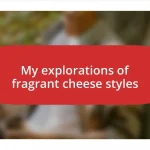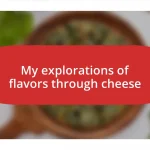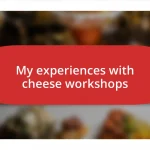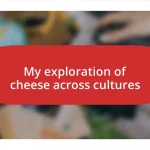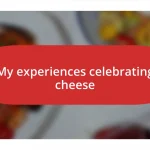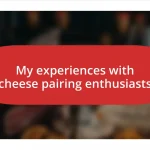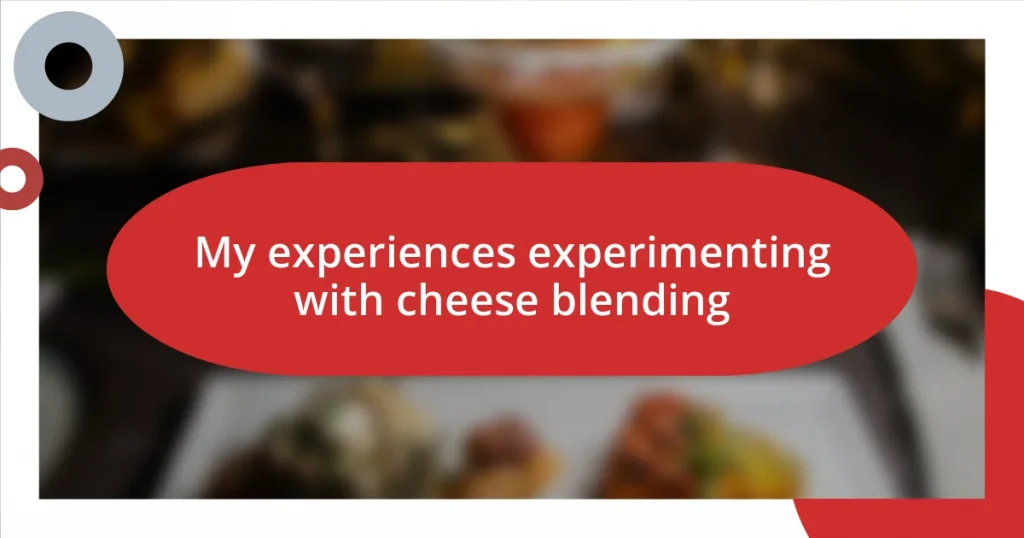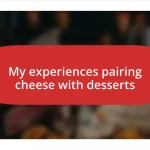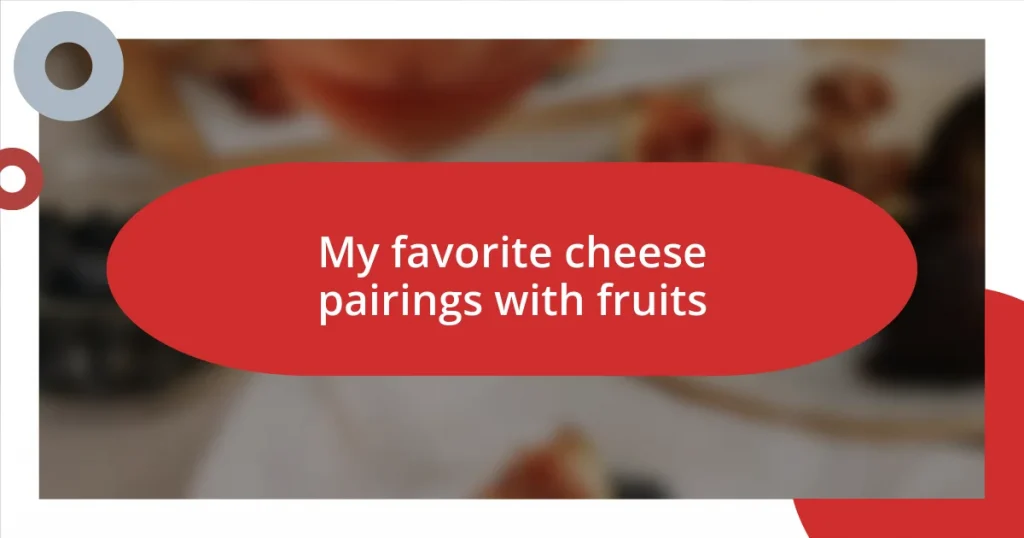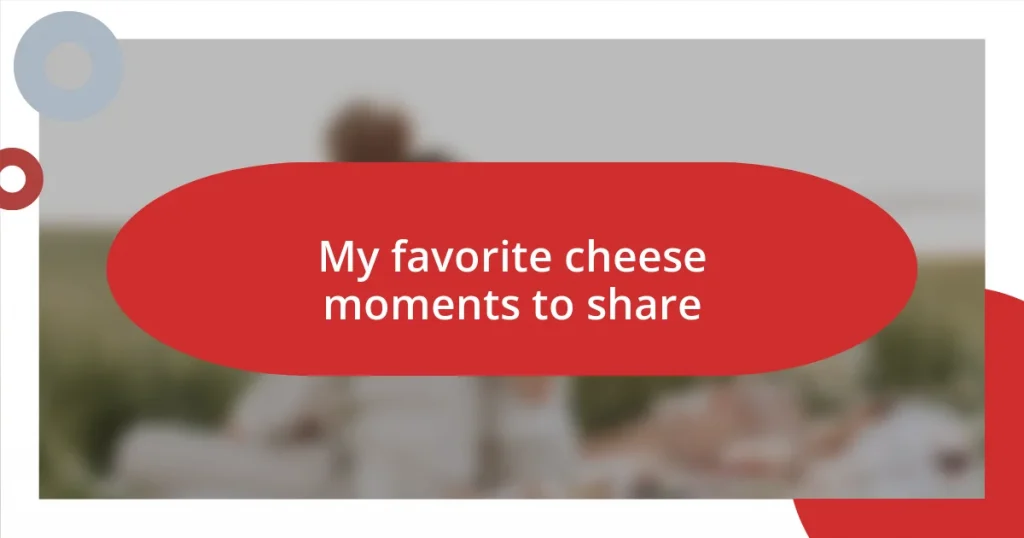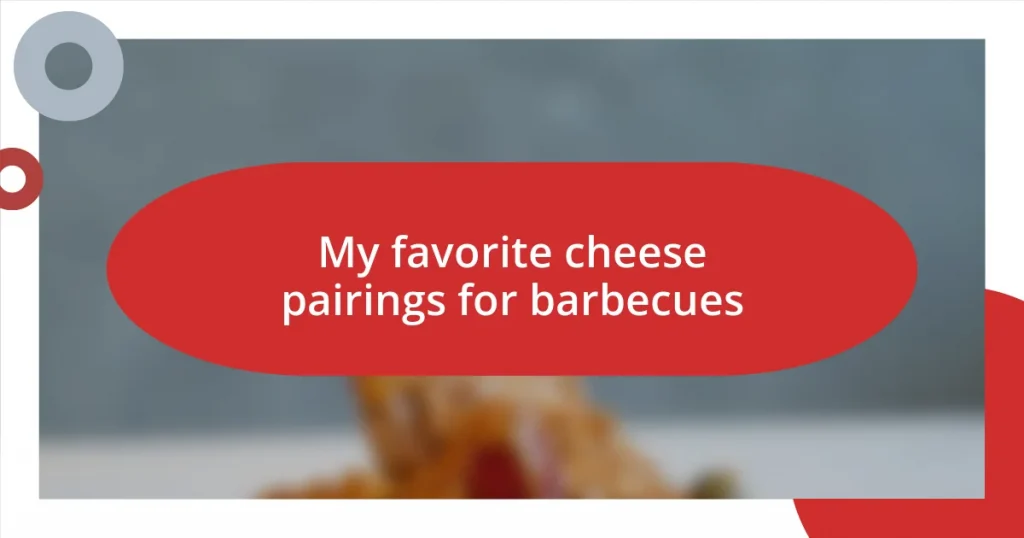Key takeaways:
- Experimenting with cheese blending enhances culinary experiences by balancing flavors, textures, and using various cheese types to create unique combinations.
- Documenting the blending process helps track experiments, preferences, and successful combinations, leading to continuous improvement in cheese crafting.
- Sharing cheese creations, whether through social media or gatherings, fosters community engagement and inspires new ideas and techniques among cheese enthusiasts.
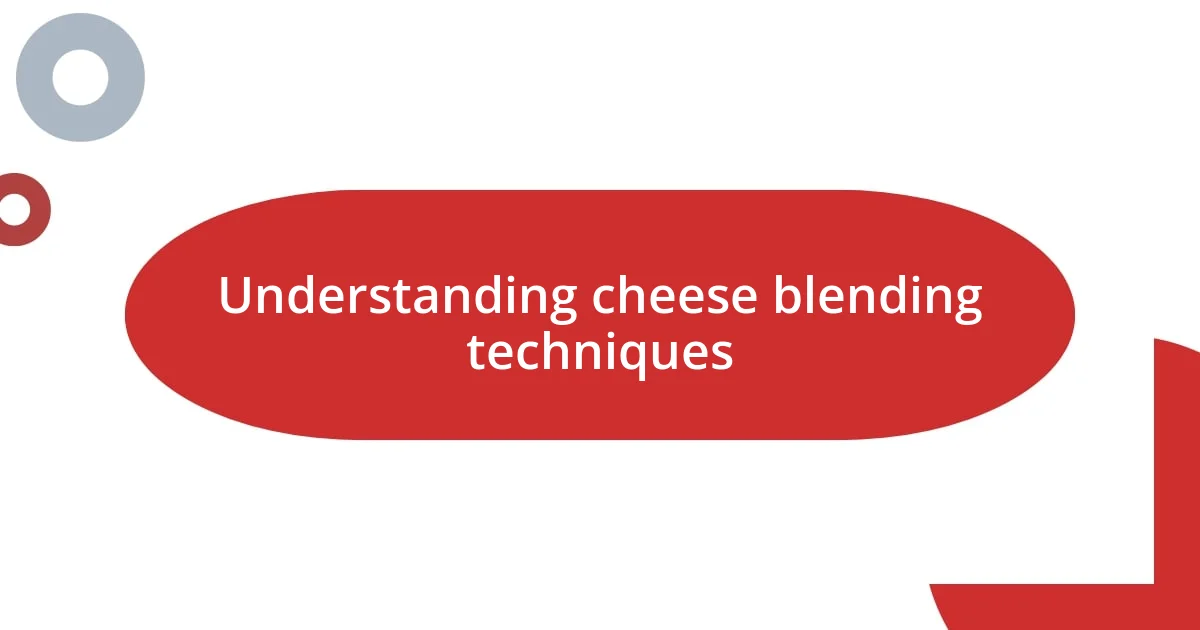
Understanding cheese blending techniques
Cheese blending techniques can truly transform your culinary creations. I remember the first time I blended a sharp cheddar with creamy goat cheese; the combination evoked a delightful contrast that danced on my palate. Have you ever experimented with different textures in cheese? It’s a thrilling process that brings about unexpected results.
One crucial technique I’ve learned is balancing flavors. Pairing a stronger cheese with a milder one can create a harmonious blend without one overpowering the other. I’ve found that mixing blue cheese with a light mozzarella not only softens the intensity but also adds a rich depth. It’s almost like creating a symphony of flavors; do you feel the same when you blend your cheeses?
Another approach involves melting and incorporating cheeses into dishes. When I blended Gruyère into a classic mac and cheese, it took the dish to a whole new level. The creamy texture paired with that nutty flavor? Simply unforgettable. The key here is experimenting—what blends have worked for you that shocked or delighted your taste buds? Sharing these experiences is what makes cheese blending so much fun.
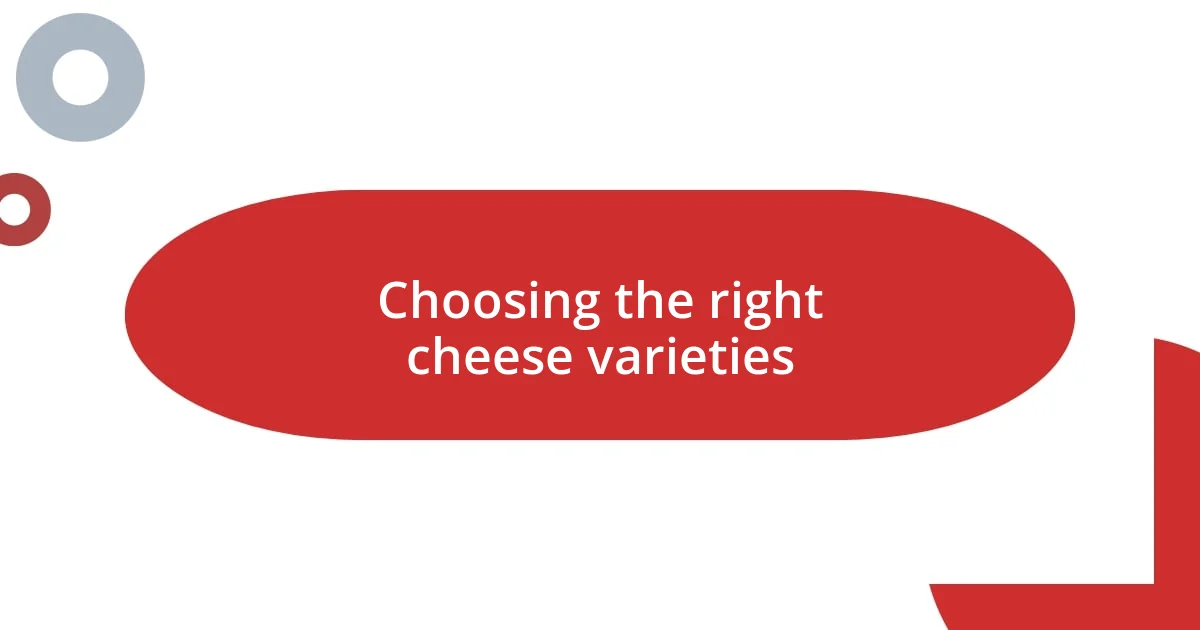
Choosing the right cheese varieties
Choosing the right cheese varieties can truly make the difference in achieving a memorable blend. I often think about my first experience pairing aged gouda with a hint of fresh mozzarella. The creaminess of the mozzarella enveloped the rich, nutty notes of the gouda, and I recall feeling a wave of excitement with each bite. Isn’t it fascinating how the right combination can elevate the eating experience?
When exploring cheese varieties, consider their textures and flavors. For instance, I frequently mix tangy feta with creamy brie. The contrast not only excites the palate but also adds a dimension that leaves a lasting impression. It’s like painting with flavors—each cheese contributing its unique hue, creating a beautiful culinary masterpiece.
You might also find it helpful to pair cheeses based on their milk source. In my experiments, blending sheep’s milk cheese with cow’s milk varieties like cheddar has worked wonders. The unique creaminess of the sheep’s milk can enhance the cheesiness of the cheddar, offering a delightful complexity that I never anticipated. Have you tried this approach? If not, I highly recommend it!
| Cheese Type | Flavor Profile |
|---|---|
| Aged Gouda | Nutty, Sweet |
| Fresh Mozzarella | Creamy, Mild |
| Feta | Salty, Tangy |
| Brie | Rich, Buttery |
| Sheep’s Milk Cheese | Creamy, Distinct |
| Sharp Cheddar | Pungent, Bold |
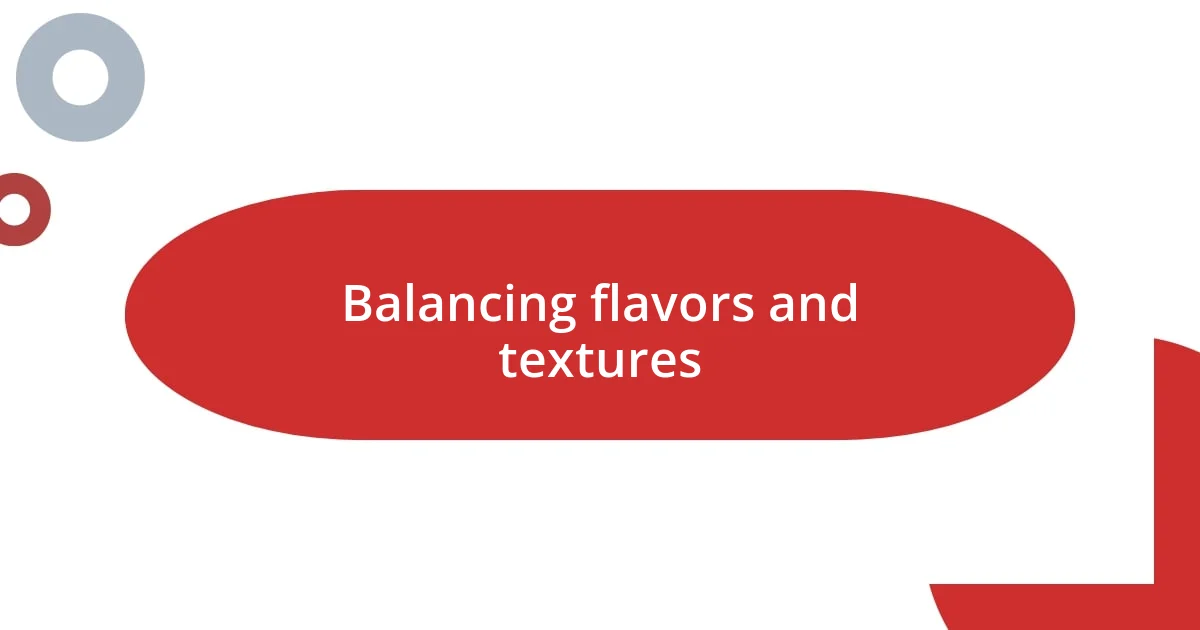
Balancing flavors and textures
Balancing flavors and textures is truly an art that I find exhilarating. One time, I experimented with a rich fontina and a zesty goat cheese, creating a melty spread that had both creamy and tangy notes. The excitement of tasting that blend was overwhelming—it felt like a secret handshake between flavors. It’s in these joyful moments that I realize how important it is to consider the weight and presence of each cheese.
To achieve the perfect balance, consider these key factors:
- Intensity: Pair strong cheeses with milder ones to avoid overpowering your dish.
- Texture: Combine creamy textures with firmer ones for a more enjoyable mouthfeel.
- Flavor Profiles: Explore contrasting flavors, like pairing sweet cheeses with salty or tangy counterparts.
- Melting Properties: Think about how each cheese behaves when melted; some create a smooth sauce while others might stay chunky.
- Aging Levels: Mix aged cheeses with fresh varieties for a wonderful depth and complexity.
I can still remember the day I tossed together a smoky Gouda with a light ricotta; when that warmth and creaminess settled on my tongue, I knew I was onto something special. Each bite led me to new flavor territories, and the experience was as exhilarating as discovering a new favorite song. Do you have memories of unexpected blends that sparked joy for you? I’d love to hear about them!
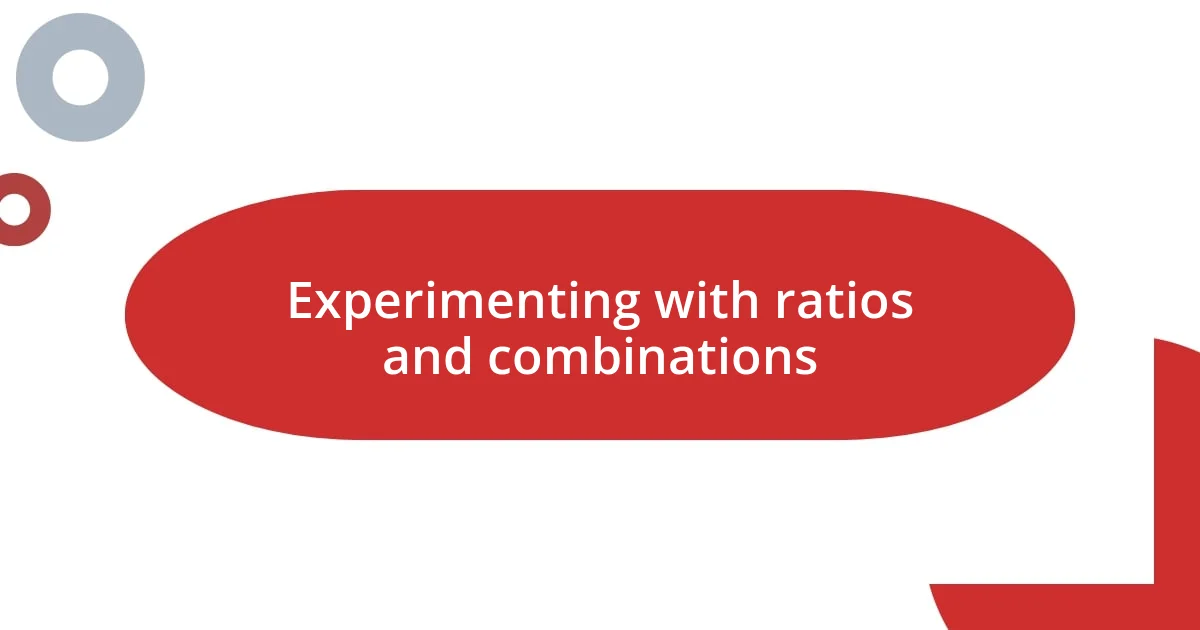
Experimenting with ratios and combinations
Experimenting with the right ratios and combinations of cheeses can feel like a delicious science experiment. I once tried blending sharp Asiago with nutty Gruyère, and the results were staggering. The sharpness of the Asiago danced perfectly with the creamy texture of Gruyère, creating a symphony of flavors that lingered in my mouth long after the last bite.
As I continued my journey, I discovered that small adjustments in ratios could lead to entirely new experiences. For example, adding just a touch more of creamy goat cheese to a blend of tangy blue cheese transformed the entire profile. Suddenly, the goat cheese bound the intensity of the blue, softening its sharpness and allowing for a gentler, more approachable flavor. If you haven’t played around with ratios in your cheese blends yet, you might be surprised by what a few grams can do.
One memorable evening, I decided to whip up a cheese dip for friends using a blend of cheddar and pepper jack. Initially, I thought equal parts would suffice, but reducing the proportion of pepper jack highlighted its spicy notes without overshadowing the cheddar’s earthiness. Watching my friends savor each bite reminded me just how pivotal these ratios are in crafting a truly delightful cheese experience. Have you ever tried adjusting ratios? It can lead to a lightbulb moment that elevates your cheese game to a new level!
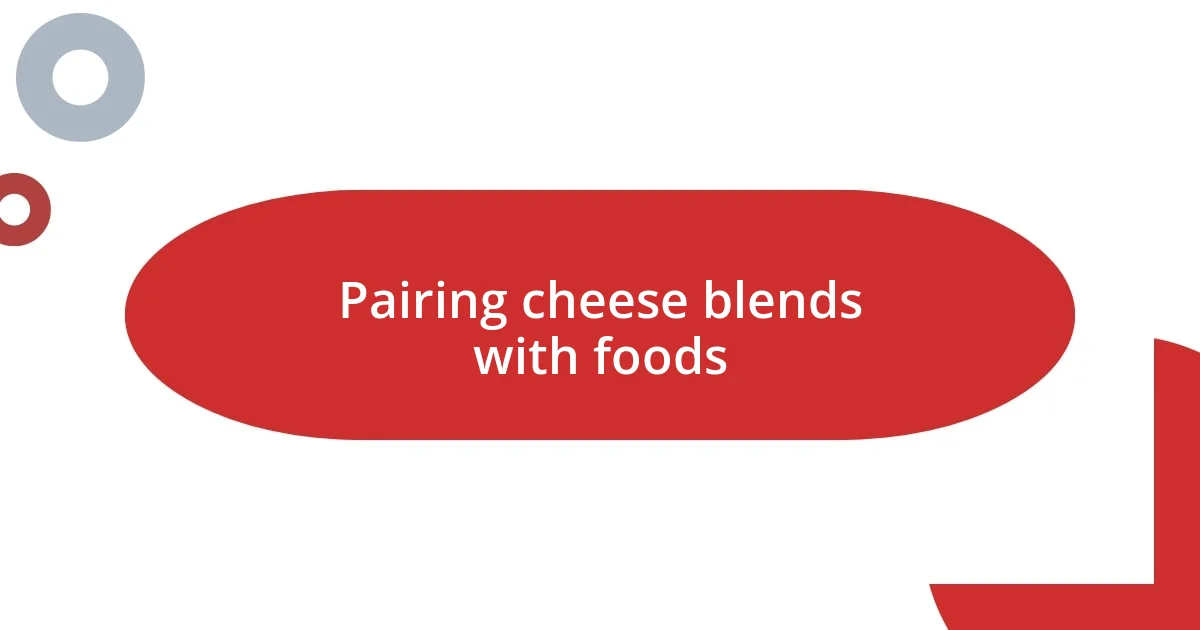
Pairing cheese blends with foods
Pairing cheese blends with food can elevate an ordinary meal into an extraordinary experience. I remember one dinner party where I served a melty blend of brie and cheddar atop a savory mushroom risotto. The creaminess of the cheeses mingled beautifully with the earthy tones of the mushrooms, creating a comforting dish that had my guests asking for seconds—there’s nothing quite like sharing flavors that surprise and delight, right?
Another fantastic pairing I tried was a peppery arugula salad with a blend of feta and smoked gouda. The brightness of the arugula, combined with the salty feta and the deep smokiness of the gouda, created a remarkable explosion of flavors. It’s fascinating how certain blends can pull together an entire dish, don’t you think? That salad didn’t just present flavors; it told a story of my kitchen discoveries.
When enjoying a simple cheese platter, I’ve found that pairing sweet, creamy mascarpone with spicy salami can create a delightful tension on the palate. The rich sweetness of the mascarpone balances the heat of the salami, showcasing how contrasting elements can harmonize beautifully. Each bite felt like a small adventure, a wonderful lesson in how we can play with textures and flavors to cultivate joy. Have you ever found a combination that made you rethink how cheese can be enjoyed? It’s those moments that transform my culinary journey.
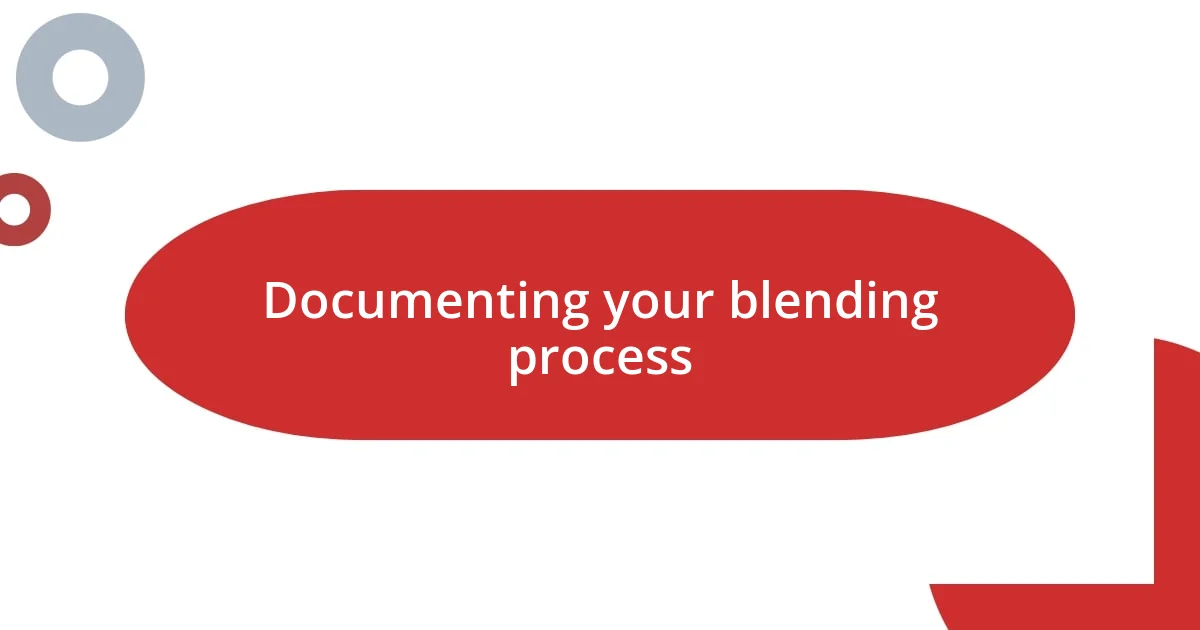
Documenting your blending process
Documenting your blending process is an essential part of refining your cheese experiments. I keep a dedicated notebook where I jot down my thoughts after each blending session. That way, I can capture not just the ratios I used, but also how the flavors evolved and what feelings they evoked as I tasted—did the sharpness surprise me, or did a creamy texture soothe my palate?
In my experience, using a methodical approach to document each attempt can illuminate fascinating trends over time. One evening, I used three different cheeses to create a fondue, and as I compared my notes, I realized that the balance of creaminess and sharpness varied significantly based on the order in which I melted the cheeses. Looking back, those notes revealed lessons I didn’t realize I was learning in the moment.
More often than not, these documented moments lead to epiphanies about my preferences and those of my friends. For example, after blending a trio of cheeses for a gathering, I recorded the various reactions to each combination. Seeing the joy on their faces—and noting which blends received the most compliments—sparked ideas for future experiments. Have you ever paused to reflect on what you’ve created? It can be incredibly rewarding, offering a sense of progression in your cheese blending journey.
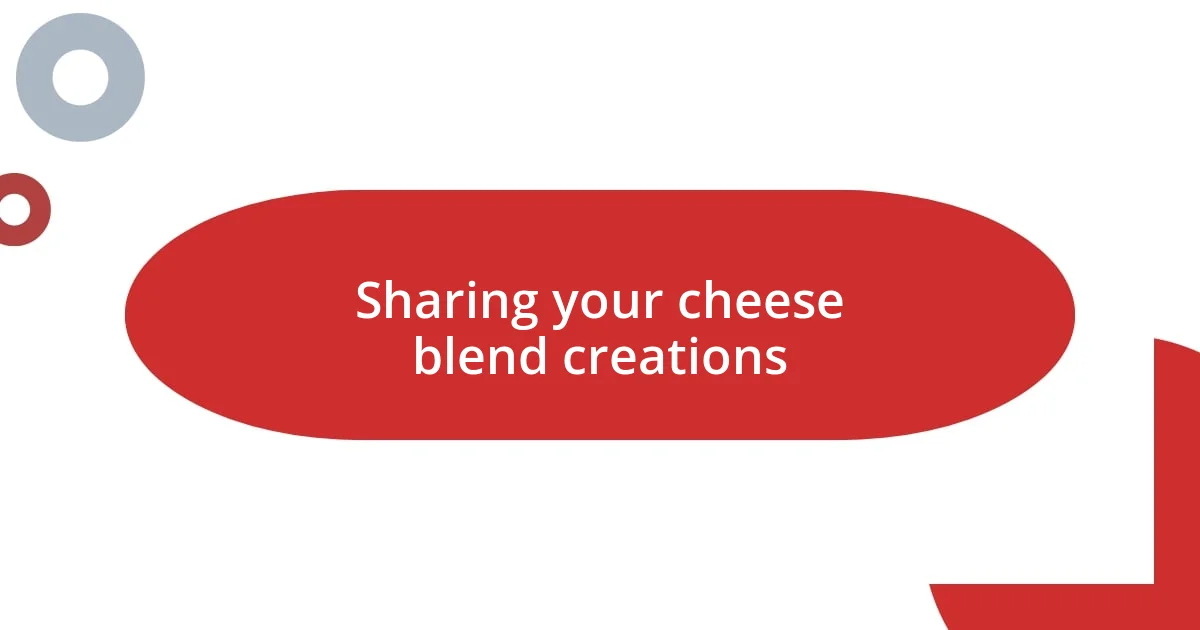
Sharing your cheese blend creations
Sharing your cheese blend creations can be one of the most rewarding aspects of experimenting in the kitchen. I vividly remember the first time I hosted a small gathering and unveiled my unique blue cheese and balsamic reduction spread. Seeing my friends’ faces light up as they tried it for the first time felt like a mini celebration. Do you remember the excitement of sharing something you crafted yourself? It’s such a rush!
One of my favorite ways to share is through social media. I often post pictures of my latest cheese creations, along with a little backstory about the inspiration behind each blend. The feedback is invaluable; it sparks conversations and gives me fresh ideas. Have you ever shared your culinary adventures online? Engaging with others who share your passion creates a lovely sense of community.
I’ve also started hosting informal cheese tasting nights where everyone brings their favorite blends. Not only does this allow for exploration of different flavors, but I also find it’s a great opportunity to share techniques and tips with fellow cheese enthusiasts. It’s fascinating how a simple gathering over cheese can lead to lively discussions about flavor profiles and memories tied to specific ingredients. What do you think would happen if you opened your kitchen to others? The possibilities are endless!



